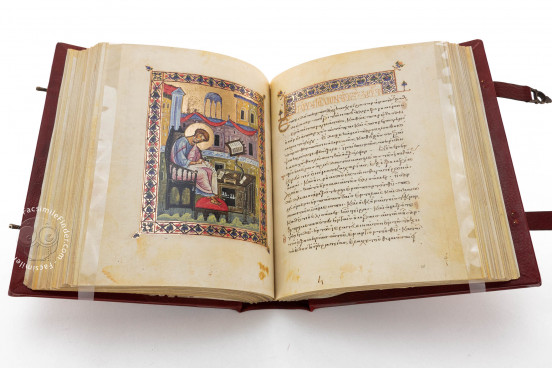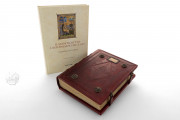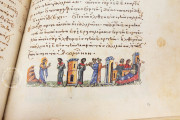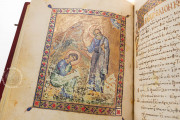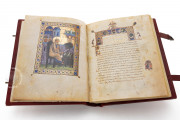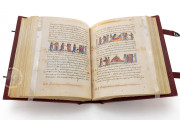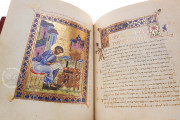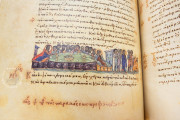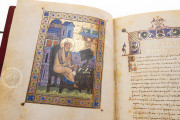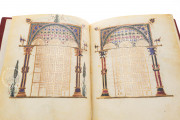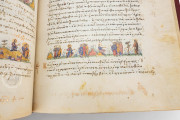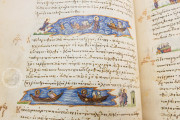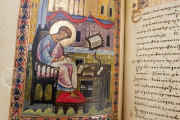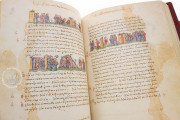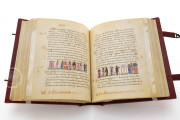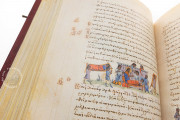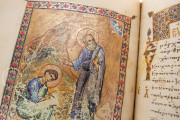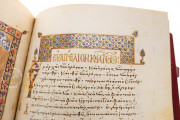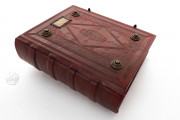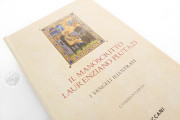Especially renowned among specialists of Byzantine art, the Laurentian Gospels—also known as the Laurentian Tetraevangelion—is a treasury of late eleventh-century illustrations. The codex constitutes one of the richest surviving pictorial repertoires of Byzantine Gospel illumination. Bound in a luxurious Medici binding of the sixteenth century, the manuscript presents the four Gospels prefaced by three pages of canon tables and the Eusebian letter to Carpian.
In addition to the glorious evangelist portraits introducing each of the four Gospels, the book is densely illuminated with more than 280 narrative scenes. Painted in fresh, bright colors, the images are generously highlighted in gold.
Images to be Read
While the Gospel book boasts dazzling canon table pages, exquisitely decorated headpieces and initials, and first-rate full-page evangelist portraits, its greatest artistic significance lies in the miniatures found on many of its text pages. Spanning the width of the text column, these images are unframed narrative scenes arranged as illustrated bands that visually unfold the Gospel narratives from left to right as if they were a line of text. The number of miniatures differs for each Gospel, and some leaves are decorated with as many as three miniatures.
Text Highlighted in Gold
The varying height of the illustrations shows that the creation of the manuscript necessitated close coordination and planning to make room for images during the transcription of the text. Several scribes were probably involved in penning the careful minuscule, emphasizing the grand scale of this undertaking. Although much of the Gospels are written in light brown ink, each verse begins with a gold initial, and the chapter headings are entirely in gold.
Unknown Patronage
While all evidence points to the prestige of this commission, the Laurentian Tetraevangelion lacks a colophon, and there are no clues as to its origin and early ownership. The codex, nonetheless, shows many traces of use, such as the numerous wax drippings from candles and the missing beginning pages of the canon tables. Curiously, there are also letters of the Armenian alphabet written sequentially on the bottom of some pages, which—along with an Armenian inscription in dark ink on fol. 27v—suggest that the book was studied perhaps in preparation for another manuscript project.
Medici Chained Binding
The book was one of the original three thousand volumes in the private collection of the Medici family that later constituted the core collection of the Biblioteca Laurenziana when it was opened to the public in 1571. At that time, it was rebound in the characteristic red leather with the Medici arms of the library. The binding retains the chain used to secure the book to a bench at that time. In 1808, the collection of the Dominican convent of San Marco merged with the Laurenziana to form the Biblioteca Medicea Laurenziana.
We have 1 facsimile edition of the manuscript "Laurentian Gospels": Manoscritto Laurenziano Pluteo 6.23 facsimile edition, published by Istituto dell'Enciclopedia Italiana - Treccani, 2020
Request Info / Price
